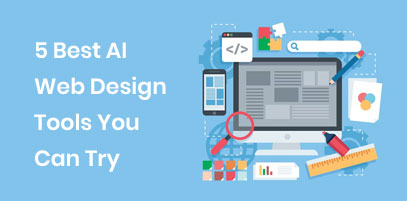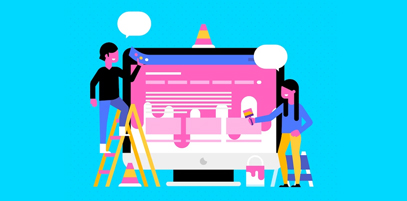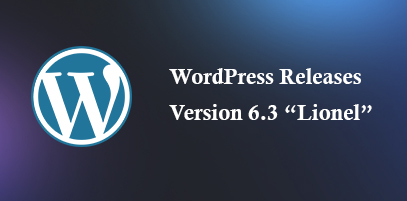Responsive Vs. Adaptive Web Designs: What's the Difference
By :- Nav - Web Guru Awards Team

Web design is undoubtedly an ever-evolving field. Going back to the 2000s, you will remember design with heavy fonts and static design because everyone was using PCs. However, with the advancement in technology, there are new gadgets with various screen sizes.
Due to this reason, designing a website according to the screen size is crucial. Responsive and adaptive web designs play a huge role in this. So, let's have a look in depth!
What is Responsive Design?
The latest web design trends are always changing for the better, and discussion over it is justified. Well, to know, you must understand both approaches.
A website created using a responsive design is the same for every device. So, how does it work on all screens? Actually, the website is fluid and alters its layout and appearance based on the dimensions and orientation of the device. During this process, the UX designers work closely with the developer to create a website which adapts to every viewport.
In addition, the developers use unique Cascading Style Sheets to ensure that websites will reform according to the screen. Also, it has certain breakpoints to tell the website when to modify itself.
What is Adaptive Design?
Adaptive design is an altogether different process. Here developers use helpful resources for web designers to create various website layouts. So, developers with other teams narrow down all the possible devices on which their users can access the website. Then, developers create specific layouts for each.
The common screen sizes can be 320px, 480px, 760px, 960px, 1200px and 1600px etc . There can be different user experiences for each layout for the same website. You can make out from this explanation that it's more time-consuming than responsive designs. Furthermore, it involves lots of work, but it's one of the low code development platforms.
Pros and Cons of Responsive Design
Here are some plus and negatives of the responsive design:
Pros:
-
It takes less time
-
Do better in search engine rankings
-
Can adapt to numerous screen sizes
Cons
-
A large website can be slower to load
-
Involves heavy coding
-
Developers and UX designers have to work perfectly to deliver a smooth website.
-
It may hang for some screen sizes.
Pros and Cons of Adaptive Design
Here are some advantages and disadvantages of Adaptive Design:
Pros
-
Websites are smooth and easy
-
It requires less coding
Cons
-
It requires lots of time
-
Uncommon screen sizes are not covered
Finally, Decoding the Difference
Both responsive and adaptive design has their pros and cons. So, you must narrow down your audience and your website's reach and then decide. The key difference you must remember is responsive design can change its layout according to small to large screens.
On the other hand, adaptive design requires the formation of different websites for each possible screen size. Also, responsive design is best for larger websites that work from scratch. In comparison, adaptive design is great for smaller websites that are revamped.
Developers must do excessive coding in the responsive and work by UX designer. While in the latter one, the UX designer has to create various websites. So, according to your platform, niche and audience, you can decide which one is best for you!
Recent Topics
-
 WordPress.com Launches 100-Year Web Hosting Plan
WordPress.com Launches 100-Year Web Hosting PlanWordPress, the platform that helps people create websites, now offers something rare. It has taken a bold leap into the future with its 100-year web hosting plan. Yo...
Read MoreBy :- Laura Davidson
-
 5 Best AI Web Design Tools You Can Try
5 Best AI Web Design Tools You Can TryWhy bother with all the effort of creating websites manually when we have amazing AI tools? In fact, using these tools has become one of the most-practiced ...
Read MoreBy :- Tiana K
-
 Role of Animation and Micro-Interactions in User Experience
Role of Animation and Micro-Interactions in User ExperienceIn today's world, almost every brand wants to create a user-friendly interface for its customers. The main aim behind this is to increase customer base and revenue. Now, when it comes...
Read MoreBy :- Laura Davidson
-
 Web Design Trends to Watch Out for in 2024
Web Design Trends to Watch Out for in 2024Web design is a constant-evolving technology landscape. As a web designer, staying tuned with web design trends and keeping your designs up-to-date is important. These trends will affect ...
Read MoreBy :- Esther McGuinness
-
 The Power of Storytelling in Web Design Engaging Users with a Narrative
The Power of Storytelling in Web Design Engaging Users with a NarrativeStories never fail to engage listeners. That’s why web designers are leveraging the art of storytelling in their designs. In web designing, storytelling goes beyond merely usin...
Read MoreBy :- Navkiran Dhaliwal
-
 WordPress Releases Version 6.3 ?“Lionel”
WordPress Releases Version 6.3 ?“Lionel”WordPress 6.3 “Lionel” is out! Now, you’ll be able to create more beautiful and compelling websi...
Read MoreBy :- Tiana K
